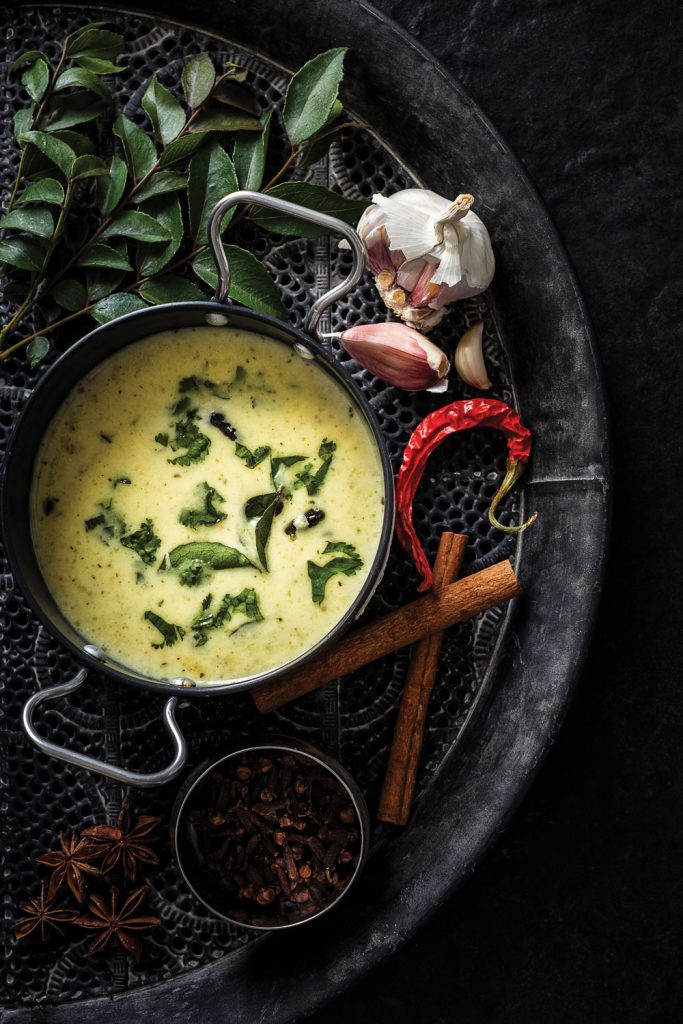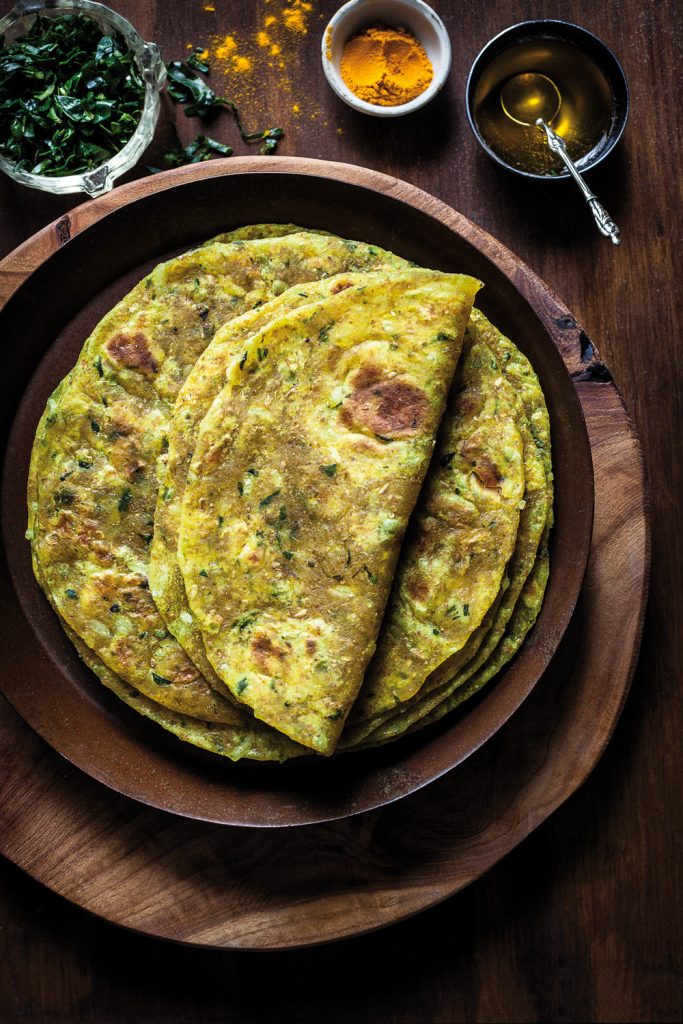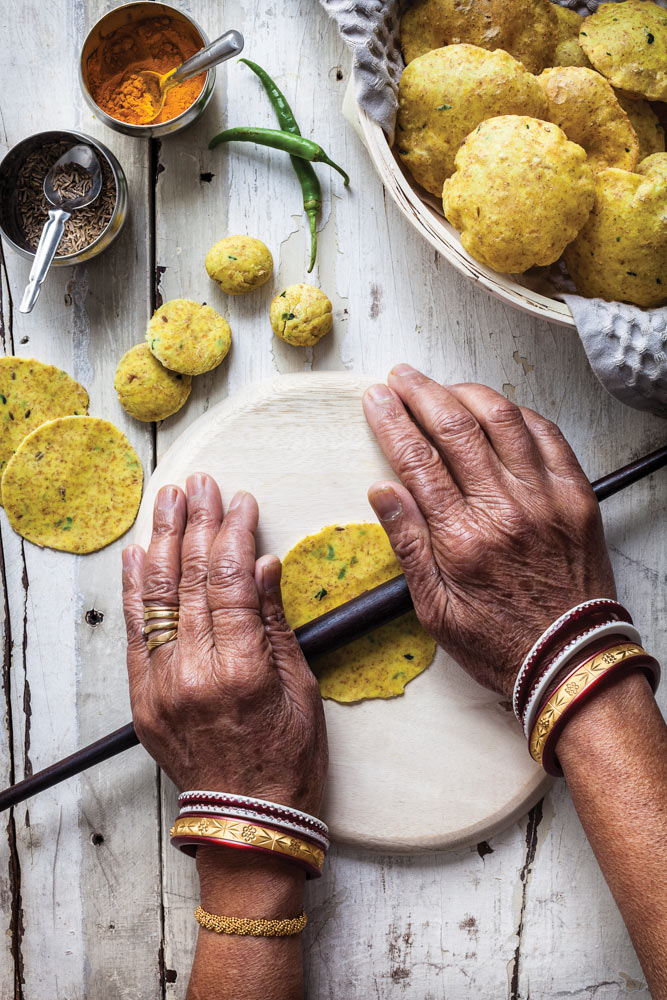The Language Of Love
For many of us, our earliest cooking memories often involve a parent or family member showing us how to make a simple (yet inevitably messy) dish, perhaps something along the lines of pancakes or chocolate cookies. Our family’s influence on our kitchen experience flows through to those old-faithful family dishes, served up on the table every special occasion, with the recipe kept on some old scrappy bit of paper and shared around. For Jayshri Ganda, learning the recipes of her mother’s Gujarati heritage involved more than just writing them down on a notepad.
After trying to emulate the dishes during her university years, she called her mum, Laxmi, and asked for some cooking tips, however found that her advice of, “just add a little bit of this and a little bit of that”, wasn’t quite specific enough.
Jayshri soon realised just how valuable these recipes were and how easily they could be lost if not written down. This realisation soon sparked an eight month mission to document these dishes
With her mother to share with future generations and the wider community. The result? 100+ beautiful Gujarati dishes collated into a visually stunning hard cover cookbook, aptly named A Little Bit of This, A Little Bit of That. Jayshri and Laxmi’s vision to bring Gujarati food to the rest of New Zealand has seen their initial print run of 2,000 copies fare so successfully that is has now been re-printed twice (with another on the way), has sold 4,000 copies and took out the Best Indian Cuisine Book and Best Spices and Herbs Book at the 2018 Gourmand World Cookbook Awards – considered ‘the Oscars of food awards’.
With “an essence of New Zealand sprinkled in,” A Little Bit of This, A Little Bit of That includes meals for every occasion, from Fish Curry and Sunday Roast Chicken, to an Indian-style hangi dish of Stir-Fried Peas & Vegetable as well as a myriad of vegetarian dishes for the plant-based and flexitarians among us. We got a chance to chat to Jayshri about the book, along with what makes Gujarati food so unique, the process they went through when choosing recipes and how it feels to know these family recipes have been loved by so many.

Can you tell us a little bit about what makes Gujarati food so special?
What makes Gujarati food so distinct from a curry you get in an Indian restaurant in New Zealand, is its freshness and lightness in the curry sauce. The depth of flavour is created by a tomato base and infused with aromatic spices to create a mouth-watering dish that is light on the stomach and doesn’t leave you with the heavy feeling that curries sometimes do! Gujarati food is abundant with vegetables and lighter on meat dishes.
You’ve said that food is the Indian Language of Love. Why is that?
Indian culture expresses its love with services and gifts. Often when visiting a Gujarati family, a host will never let you leave without offering a chai, some snacks or even a full Gujarati meal! The pantry is always filled with food for unexpected visitors. When a Gujarati family visit your home, it is always accompanied by the gift of food – you would never go empty handed.
My mum tells me, even in India when visiting, you would always take a packet of biscuits or an Indian snack. It’s even an unwritten rule that when returning a dish to someone, we will fill it with food. Love is rarely shown with words in the form of “I love you, or I care about you” and whilst hugs are given, I believe verbal and physical love has been influenced by the western culture.

What do you think it is about food that makes it such a great tool for bringing people together?
Whilst we know on a conscious level that food will keep the belly full, it is the memories around food and sharing with other humans that will ultimately keep your heart warm.
The power that food has with the senses of taste, sight, aroma and touch are what keeps our spirits alive and helps to connect our souls with the people that we are sharing it with.
Can you tell us the story behind the name of your book A Little Bit of This, A Little Bit of That?
The name is a running joke amongst many Indian friends, and I’ve even seen some wonderful videos on social media that capture the essence of trying to emulate your mum’s food. This would start by calling mum up, asking for such and such recipe, and her typical reply would be “just add a little bit of garam masala, a little bit of salt, a little bit of this, a little bit of that…”, which we would respond with “but mum, how much is that?”.
After my mum and dad sold their family dairy and my mum had more time to spare, I decided to explore how to cook some of her dishes and realised that the only way that I could fully emulate the taste of home, was by documenting her exact measurements.
What made you decide to preserve these recipes to share with others?
When catching up with friends and sharing with them what I was working on with my mum, many of them were like “oh my mum is same” and asked if I could share the recipes with them. It was in these conversations that I realised the need of others, and as humans we always love being able to help others.
So, I saw an opportunity that I knew would bring comfort and help to so many. I set out to research what was missing in the market and found there was a huge gap that I could fulfil, so the process started to put together a cookbook to share.

What process did you go through when deciding if a recipe was going to be included in the book?
Initially, I wanted to document and include every Gujarati recipe that mum had ever made, and I grew up with, but as we explored book publishing and printing, we came across limits in page printing vs binding and finance. So, the decision was finalised by taking it to my community to decide.
I set up a Facebook page and used social media and my audience to figure out what people wanted in the book and what was most important to them. After all, it was for them.
You’ve included recipes that have a distinct New Zealand influence. What did you look for when creating recipes that blended these two cultures?
The recipes that blended the two cultures together were dishes created for us by mum from her many years learning about Kiwi culture from when she first moved to New Zealand at age 17, after marrying dad. So, they were dishes we grew up with, such as mum’s version of a dressed pie, but it was a masala pie with lamb instead of beef.
The book was originally self-published in 2016 as a limited run of 2,000 copies. 5 years later, you have sold 4,000 copies and won two Best In The World categories at the 2018 Gourmand World Cookbook Awards. How does it feel to know these family recipes have had such a wide appeal?
When I asked mum over a phone call about this, her words were “I’m over the moon, I never ever imagined or thought we would do this kind of thing or people would have any interest in our food”.
For me, it’s been an incredible journey and like mum, I never imagined that others would embrace our dishes as they have. We have loved meeting the wonderful people in the food scene, and we’ve received the most incredible and heart-warming messages from people all around the world. Many have reconnected with the taste of their culture, and there are those who miss their mum who are no longer here. It is those people who are thrilled to make a dish “just like my mum used to”.
What is your favourite recipe from the book?
Soupy Chicken is favourite for us, not just because of the taste, but the history and tradition it holds within our Ganda family, paving our way into the NZ culture.
There’s also nothing like waking up on a Sunday morning to smell mum cooking soupy chicken with fresh hot roti, all prepared so you can tuck in with your hands and embrace her love.

